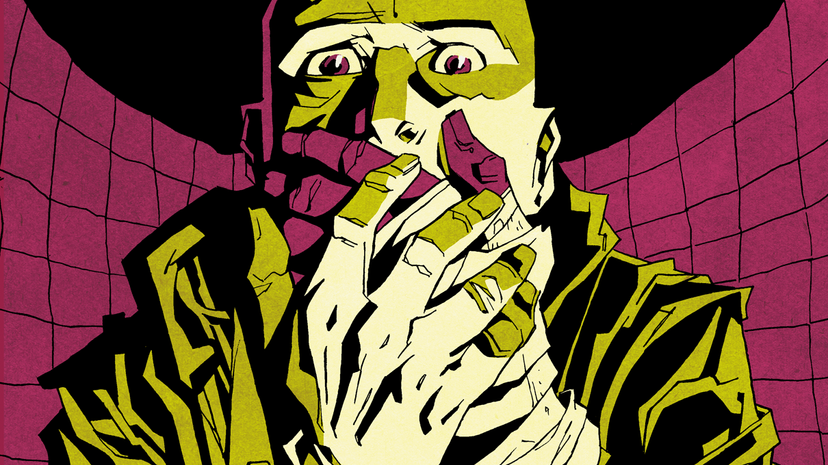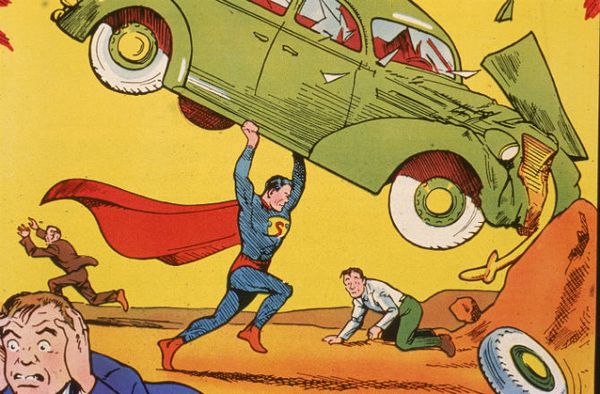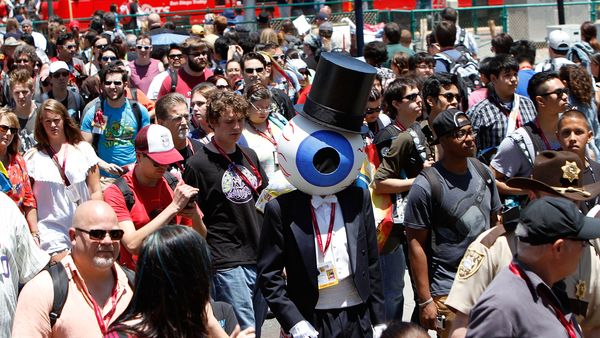
Imagine you've got 20 years of experience in your field. You work for the captains of your industry and have a reputation as one of the best in your business. Would you take the risk of striking out on your own, founding your own company? If so, you'd better make sure to have a good strategy.
That's just what Mike Marts did, leaving behind comic book titles like DC's "Batman" and Marvel's "The X-Men" to become editor-in-chief of AfterShock Comics. On the company's first anniversary of publishing, HowStuffWorks spoke to Marts about starting a new media business in today's competitive market. He described the company's founding, their first year goals and how diversity in storytelling is building a loyal audience.
Advertisement
AfterShock was founded by a small group of five partners, including Marts and publisher Joe Pruett, another comics industry veteran. Its remaining founders have a combination of film, media and technology experience, producing and distributing multimedia entertainment. AfterShock's execs realize that in today's market good stories could attract Hollywood's interest, Marts says, and so they're well prepared if someone approaches them to develop a comic into another form of media. But Marts has a long history with comics and turns to that medium first and foremost.
"Everything we do needs to work in publishing," he says. So when AfterShock's partners came together they agreed on three foundations for the venture: quality products, good storytelling and intelligent risk taking. Being on the same page in those early stages is what convinced Marts to leave the security of Marvel, having faith in AfterShock's future success.
"There's a lot of sweat, blood and pain that goes into building something," Marts says, "You have to be prepared to journey through the tough times in order to get to the good stuff."
For its first year out of the gate, AfterShock focused on publishing comics by big-name talent, while letting those creators also own the stories they produced, a model that's different than that of big companies, where Marvel or DC, for instance, own the characters and stories, while the writers work for hire.
"Creating something on your own and having control of it really means something these days," says Marts, "Not only do you have a project which is your own and you have control over, but these projects are actually going places these days."
Marts cites television adaptations like "The Walking Dead," "Preacher" and "iZombie" as examples where the once-small community of comic book creators are now getting recognition beyond the printed page. That's why AfterShock started with comics by creators like Garth Ennis (co-creator of "Preacher") and Warren Ellis (co-creator of "Red"), because they're instantly recognizable in the comics community as well-known storytellers.
For his part, Marts is looking for specific kinds of stories: ones that both he and the creators are passionate about. "We've had pitches come in from high-end writers, and we've passed on them ... When I was coming up through the ranks as an associate editor my boss was Nel Yomtov, a Marvel editor, artist and bullpenner," says Marts. "He hammered into me that you should always strive to make the best comic possible, no matter what the ingredients are."
In a recent New York Times interview, comics writer Paul Jenkins explained the company's approach to diversity is why he brought his transgender superhero comic "Alters" to AfterShock. Jenkins described the comic book industry as a "boy's club" that he didn't particularly feel at home in. But AfterShock was a company willing to take a risk on "Alters."
Says Marts, of his company's commitment to telling a range of stories: "We're in a position as a new, small publisher to take a lot of chances. We make decisions that really just belong to four to five people, so we can do things that other companies aren't able to because of certain guidelines, parameters or boundaries."
This approach led AfterShock to another comic project that other publishers might have passed on, "Insexts" by writer Marguerite Bennett and artist Ariela Kristantina. Combining strong female leads, historical fiction, eroticism and horror, Marts jokes that the book may have created its own new genre.
Marts attributes the variety of genres in AfterShock's lineup to the company's storytelling-first approach. He acknowledges that the bulk of the comics market is taken up by superhero stories, but envisions a pie chart where all types of genres are represented in the comics industry. "I think it would be better for not only the existing audience, but also the future audience if there were more diversity in the main part of the market share," he says. "When you sit down and watch TV or go to the movies, there's no hard lines between what type of things you watch. It could be a cop procedural. It could be a sitcom about an African-American family. It could be a 1960s war show. Or it could be zombies walking around."
Moving into its second year, Marts says the company plans to continue prioritizing quality over quantity, working with familiar creator names as well as new talent. "We are not looking to go crazy with market share or too many titles per month," he says, "We'd rather spend our time making a few comics as great as they can be, rather than get a lot of comics out that are kind of half-assed."
Still, despite popular creators, quality comics and diverse storytelling, AfterShock closed out its first year with only 0.49 percent of the share of overall dollars in the comics market. Marts acknowledges that building faith and trust with readers is something that will take time. While the company still hopes to appeal to the main comics demographic, Marts thinks each of AfterShock's projects is different enough from the next to reaching new audiences as well.
Advertisement

